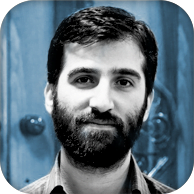The Six-day Course on Persian-Islamic Geometric Patterns
1. Introduction
2. Program details
3. Recommended Sources for Pre-reading
4. Fee Payment
5. Teaching Outcomes
6. Requirements
7. Certification
8. Required Documents
9. Registration
1. Introduction
The geometric patterns (Persian Gereh) are among the best visual effects of Islamic art and architecture. In the past, Muslim artists enjoyed a lot of scientific knowledge in the field of geometry; they knew well how to divide a single line or a circle into odd or even parts. They were great experts on the field of proportions and used it in Islamic Art & Architecture. The instruments they used to create these geometric patterns, Muqarnas and etc. was just a pencil, compass and a ruler. Who would believe that the design of massive collections, such as Isfahan’s Naqsh-e Jahan Square or the Taj Mahal in Agra, which was made by Muslim artists, was all drown only by a ruler, pencil and a compass. In this course, which is taught by a traditional architect, you will become familiar with the world of geometry. You will visit several places with beautiful and great patterns such as Masumeh holy shrine, different traditional made mosques in Isfahan to feel the beauty and aesthetics of these patterns and learn how to draw some of them in the traditional way that was drawn a few centuries past.
2. Program details
| City / Visits | Evening | Morning | Date |
| Qom | Arrival | 22 July | |
| Qom: Lady Masumeh’s holy shrine | First Gereh patterns workshop | Opening Artistic visit of lady Masumeh’s holy shrine | 23 July |
| Qom: Lady Masumeh’s holy shrine | Second Gereh patterns workshop | Second artistic visit of lady Masumeh’s holy shrine | 24 July |
| Isfahan: Naghshe Jahan square | Fourth Gereh patterns workshop | Third Gereh patterns workshop | 25 July |
| Isfahan: Sio se bridge Khajou bidge Jamih mosque | Artistic visit of Jamih mosque of Isfahan | Artistic visit of traditional bridges in Isfahan Fifth Gereh patterns workshop | 26 July |
| Isfahan: Sheikh Lotfallah mosque Imam mosque Aulighapou palace | Sixth Gereh workshop Closing | Artistic visit of traditional buildings in Isfahan | 27 July |
| Bazar | 28 July |
3. Recommended Sources for Pre-reading
- Islamic Art and Architecture 650-1250 / Richard Ettinghausen, Oleg Grabar, Marilyn Jenkins / Yale University Press
- The Art and Architecture of Islam, 1250–1800 / Sheila Blair and Jonathan Bloom / Yale University Press
- Vision of Islam / Sachiko Murata ,William Chittick / Tauris Publishers
4. Fee Payment
Fee €670
- The six-day program fee (Except Flight and Visa payments) includes airport transfers, program transport and travel, housing arrangements, meals, lectures and presentations, program pamphlets or handbook, visits to museums, historical sites and art centers.
- All hotel rooms are booked as double. For a single room, it is needed to pay additional money: 32 euro per night.
- €300 will be charged for those that want to take part in the program without any accommodation. This kind of payment would only include the fees for lectures and presentations, program pamphlets or handbook, visits to museums, historical sites, and art centers.
- 100 euro must be paid as a deposit on booking in order to confirm the applicant’s place on the course. The balance must be paid IN CASH in Iran before the start of the course. Deposits shall not be refunded for cancellations.
5. Teaching Outcomes
This course is a great way to learn about Iranian-Islamic geometric patterns from one of the best teachers in this field. Being able to draw different patterns at the end of the course and being able to make them with the tiles gifted in the course is an amazing experience that can’t be missed.
6. Requirements
To participate in the six-day program, applicants are required to agree to make a presentation in all classes and Workshops/discussions organized as part of the program.
7. Certification
All students receive a graduation certificate upon completion of their program, which is granted by Islamic School of Art (ISOA).
8. Required Documents (Electronic copies required)
- Resume: A list of your current academic position, educational achievements, and professional activities. Provide details regarding previous curriculum and/or staff development experiences.
- A completed form of ISOA Short term course. Click here to download the form.
9. Registration
Applications must include all required documents and be submitted no later than July 1, 2018, to the Islamic School Of Art ( ISOA), The Course of Persian-Islamic Geometric patterns. Incomplete applications will not be considered. For further information please contact International communication coordinator
Or Sattar Soltanpour (course director)
- s.soltanpour@isoa.ir













